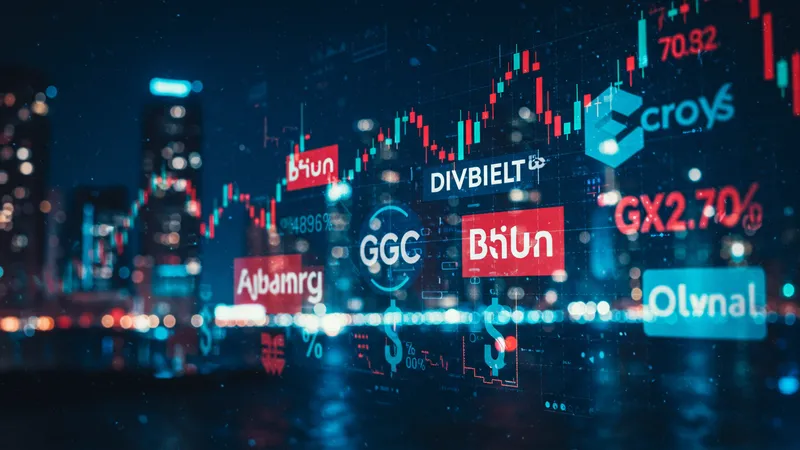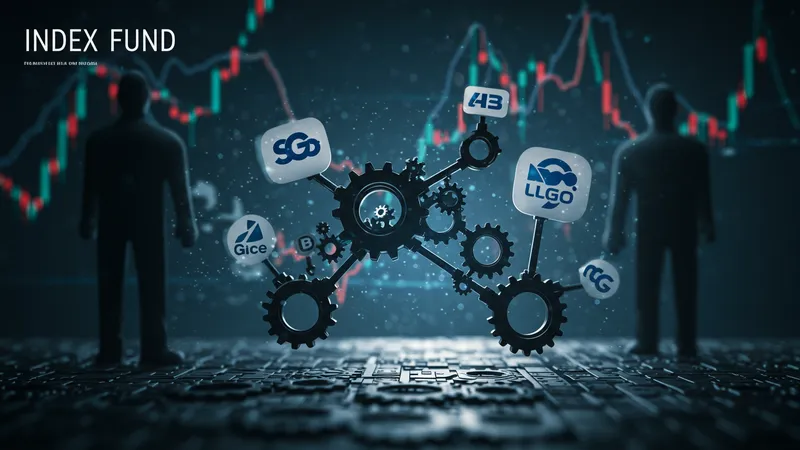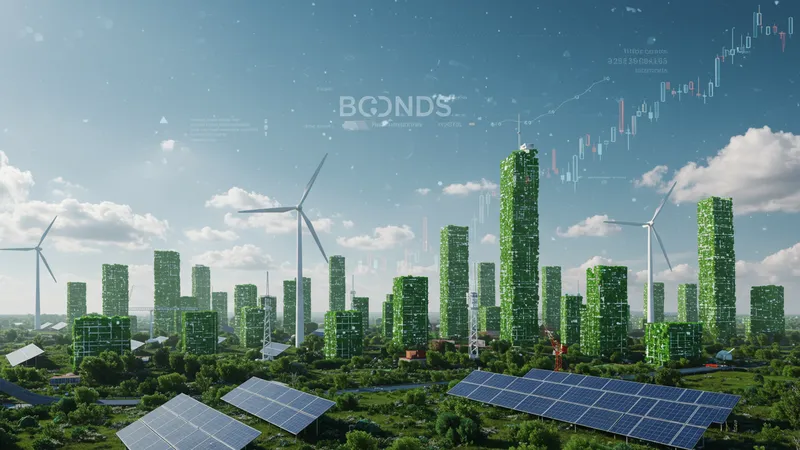

Did you know that the secrets to doubling your investments have been hiding in plain sight in the USA and Canada? Experts are saying 2025 could redefine financial freedom for millions. The catch? Only a few know how to navigate these opportunities smartly.
With economic uncertainties looming, diving into strategic investments has never held more power or promise. Investors are racing to re-align portfolios, seeking wisdom in unexpected places, and the stakes couldn't be higher. But what can you do right now to stay ahead?

In a world where the normal tactics have been upended, one less-discussed strategy involves emerging tech stocks that are quietly leading the charge. Forget the traditional blue chips; some of the highest returns are coming from unexpected tech sectors. This perspective might seem contrarian, but it's not even the wildest part…
Meanwhile, interest rates are shifting, pushing savers to rethink fixed incomes. In fact, many retirement accounts are seeing unprecedented moves, driven by the promise of these newly minted wealth paths. But what happens when even these plans get disrupted by global dynamics? The answers could change the landscape forever…
So, what are these lesser-known strategies that even top investors are adopting to thrive in 2025? What happens next shocked even the experts and could redefine your approach to investment. Dive deeper and be part of the few who truly capitalize on these evolving trends.
The integration of groundbreaking technologies within traditional sectors is offering returns that were previously unimaginable. Consider the fintech sector, which has not only streamlined financial processes but also significantly cut costs, leading to increased profit margins. Tech companies that focus on artificial intelligence and blockchain are seeing exponential growth. This isn't just speculation; real-time data validates these trends, making emerging tech a formidable contender in investment portfolios.

Fintech is no longer just about convenience; it's an essential component of maximizing returns. For example, robo-advisors are now capable of analyzing markets with astonishing precision, offering insights that far exceed human capabilities. The efficiency these technologies offer can turn a modest investment into a substantial gain. But there’s one more twist that fintech enthusiasts are capitalizing on that you need to know…
Moreover, AI-driven platforms are disrupting the landscape by providing predictive analysis that identifies potential market shifts before they happen. This level of insight was previously reserved for elite investors and insiders. The playing field is leveling, and the opportunity to harness these tools could transform ordinary investors into financial savants. Yet, there's a lesser-known aspect of this development that changes everything.
The final piece to understanding the burgeoning tech investment field lies in its diversity. Unlike the homogeneity of traditional investments, tech stocks offer a plethora of options: from disruptive startups to legacy tech giants expanding into new territories. What you read next might change how you see this forever because the diversification opportunities are far more expansive than many realize.
While real estate has long been seen as a stable investment, 2025 is rewriting the rules. Gone are the days when just residential properties dominated the market; today, commercial and mixed-use developments are pulling ahead. In the USA and Canada, shifts towards urban hubs and spaces designed for remote work are creating lucrative opportunities. It's not about buying any property — it's about choosing the right type at the right time.

Initiate a strategy focusing on sustainability; it's not only a buzzword but a lucrative investment angle. Properties that boast green energy solutions and smart home technologies are in high demand, attracting tenants willing to pay premium rents. Investors who pivot to green real estate could see significant appreciation. But, a hidden trend in this market is quietly making waves, boosting the appeal of these properties even more.
Commercial properties designed as flex spaces are witnessing skyrocketing returns. These properties cater to a fluid workforce, offering businesses the flexibility they need. In Canada, cities like Toronto are leading the charge with such developments. The pressure point? The demand is increasing faster than developers can supply. Yet, there’s more to consider about timing and allocation strategies that defy conventional wisdom.
Seize the new growth by understanding multi-use real estate. This category is thriving as properties serve dual purposes, such as combining retail with living spaces. This flexibility ensures steady income, irrespective of economic highs and lows. But wait, this sector harbors another secret that could revolutionize your investment approach — one that industry leaders are racing to act upon.
Cryptocurrency has stormed the financial world as both an innovative force and a polarizing investment. Enthusiasts have reaped astonishing returns, especially from early adopters of Bitcoin and Ethereum. But 2025 is set to welcome an array of new digital currencies with specific utilities, potentially offering sky-high dividends. The question remains: are we still early or past the golden era of crypto?

Security tokens are rapidly altering crypto's landscape by providing real assets backing. This method blends blockchain's transparency with traditional holdings' security, thus attracting more investors. The result is a more structured environment for skeptics to explore blockchain investments without usual volatility. Yet, the game-changing aspect lies elsewhere, and it might redefine traditional securities forever.
Another burgeoning trend within crypto investments is decentralized finance, or DeFi. It eliminates intermediaries and transforms conventional banking systems by allowing direct transactions. DeFi platforms are gaining traction and, when wisely navigated, can be significantly more profitable than conventional financial systems. However, understanding its intricacies and risks is vital because failing to do so could backfire.
The market's volatility often deters new investors, who dread sudden dips. Yet, strategic hedging within the crypto space can cushion against downturns. NFTs, or non-fungible tokens, also present a fresh investment frontier but are more speculative. It’s a realm where careful analysis and timing are indispensable for success. The insights coming up might unveil the surprisingly structured future this chaotic world is heading towards.
Once dismissed as niche, ethical and sustainable investments have become mainstream, driven by changing consumer values and regulatory pressures. Investors increasingly consider environmental, social, and governance (ESG) factors crucial in 2025, influencing a considerable portion of the investment landscape. But how does one differentiate genuine sustainable initiatives from mere greenwashing?

Companies across North America are doubling down on ESG strategies, not merely as an image tactic but as growth engines. Businesses that authentically integrate sustainability into their models see marked improvements in customer loyalty and financial performance. This surge in focus is paying off with impressive returns. Now, consider that even small-scale investors can access these opportunities through new platforms emerging right now…
The shift to sustainable investment practices is driven by more than just environmental concerns. Social impact, too, forms a cornerstone of future strategies. Innovative companies that prioritize diversity, equity, and inclusion are attracting discerning investors who see long-term value in more than financial gain alone. However, aligning your portfolio around these principles may be more strategic than just virtue signaling.
New indices and funds specialize in ESG to help investors, providing diversified exposure that's both profitable and purpose-driven. While ethical investments historically offered lower returns, the reverse is true today. A careful selection of ESG-focused opportunities can outperform traditional equities. What happens next in this sector could illuminate a pathway to not only enhance wealth but also foster global progress.
For many, dividend stocks seem like yesterday's strategy, but their current comeback is altering perceptions yet again. Despite a reputation for conservativeness, the right picks are defying this stereotype by delivering strong, reliable yields in volatile markets. But which sectors are hiding these high-yield gems, and what's making them so compelling in 2025?

Tech isn’t just redefining growth stocks; it also presents dividend opportunities. Established tech firms are distributing dividends thanks to stable earnings and maturing markets. These companies offer a unique chance at combining growth with income. Surprisingly, these stocks can often outpace their high-growth counterparts when factors like consistency and security are taken into account.
Infrastructure, heavily backed by government initiatives, stands as another dividend powerhouse. As aging systems undergo upgrades and expansions in the USA and Canada, related companies are poised to return sizeable profits to shareholders in the coming years. This trend holds particular significance in portfolios seeking stability amid market turbulence. But there’s another layer to this narrative involving a new financial twist…
The secret lies in international dividend stocks, which can diversify domestic-centric portfolios. Companies in developing markets frequently operate in sectors not commonly found in North America, offering novel yield avenues. These investments can provide consistent payouts, often in stronger foreign currencies, boosting returns significantly when exchanged back to dollars. What you read next uncovers another unexpected facet of thriving on dividends in today’s world.
Index funds have long been lauded for their diversified, low-cost structure, making them a favorite amongst passive investors. However, a closer look at the 2025 investment scene reveals potential pitfalls that investors may be ignoring. The convenience they offer masks risks that savvy investors are beginning to dissect.

Index funds inherently accumulate stock from large cap companies, often overlooking promising mid-cap opportunities. These larger stocks are susceptible to economic shifts and sector-specific downturns. While the surface seems calm, underlying vulnerabilities may jeopardize returns. An understanding of how these funds are structured could illuminate unseen hazards.
Another downside to index investing is the lack of strategic agility. Markets shift and react faster than ever, making the slow to change nature of index funds a liability. During rapid economic transitions, adapting in real-time is difficult. Investors might find themselves tethered to outdated strategies that fail to capitalize on emerging opportunities.
Lastly, the sheer size of popular index funds creates an impact. Their movements inherently create market disturbances, inadvertently affecting stocks. A deep dive into structural weaknesses uncovers why a proactive approach could offer better results. For those hungry to learn more about the nuances of index funds, the upcoming insights might shift assumptions.
Economic megatrends aren't merely forecasts; they are shaping the bedrock of future financial landscapes. From demographic shifts to technological innovations and geopolitical evolutions, each trend carries potential for savvy investors adept at interpreting their signals. How can these megatrends be leveraged in 2025 to amplify returns?

As populations in the USA and Canada age, certain sectors, including healthcare and pharmaceuticals, are expected to grow exponentially. Investors who recognize this potential can tailor their portfolios accordingly, reaping benefits from these demographic transitions. But what about those niches where age is just a number, and impact is being felt across generations?
Geopolitical shifts, including trade relations and policy changes, often impact markets. Scanning these moves with an investor's lens can uncover unique opportunities. For instance, shifts in technology regulations can either stifle or catapult sectors, providing a matrix of potential investment avenues. Yet, there’s another megatrend that’s capturing attention in unexpected sectors…
The proliferation of renewable energy continues to disrupt traditional power sectors, offering resource-heavy countries like the USA, and increasingly, Canada, avenues to expand. The decline of fossil fuels and rise in sustainable alternatives is not just a trend; it’s a seismic shift altering economic landscapes. The insights to follow might just prepare you to assertively navigate these massive waves.
For centuries, investors turned to precious metals during economic uncertainty, believing in their status as a safe haven. Yet, the 2025 investment scenario paints a complex picture. While gold and silver allure with promises of protection, they conceal layers of illusion beneath their shiny surfaces.

Gold, often deemed a solidity pillar, shows surprising volatility, a fact many ignore. Additionally, technological advancements have carved new pathways for precious metals, with industrial applications seeing value spikes. What does this mean for traditional investors banking on static rise?
Silver, often undervalued, is gaining spotlight with various industrial applications in electronics and green technologies. Its unpredictable demand cycle, however, poses unique risks. The dichotomy between value and demand in silver presents opportunities — but also stark challenges not immediately evident.
Beyond gold and silver, investors delve into rare elements like platinum and palladium. These metals hold significant industrial utility, namely in automotive and technology sectors. But hidden market manipulations test commitment and demand careful navigation. The revelations that follow may offer insights into precious metals far from traditional wisdom.
With interest rates fluctuating, bonds are emerging with reinvented appeal. They traditionally promise stability in otherwise volatile portfolios, yet are maturing beyond their risk-averse reputation. The bond market of 2025 reflects innovation and depth, enhancing its place in modern investment

Governments globally are issuing bonds emphasizing infrastructure and green projects. Such bonds not only offer returns usually above inflation but also capitalize on essential transitions, like rebuilding initiatives in Canada. Done smartly, they promise dual benefits of steady gains and contribution to societal betterment.
Corporate bonds present fresh avenues, with companies embarking on vast expansions post-pandemic. These endeavors result in high yields and parallel growth potential. However, credit risk analysis must be precise to mitigate potential losses. Ignoring nuances in corporate bonds could result in significant drawbacks.
The allure of international bonds also rises, offering exposure to developing markets poised for growth. Diversifying with such bonds captures foreign market gains, often coupled with currency advantages. But there's another twist: understanding how currency risks and political climates intersect, and the lessons ahead might indeed surprise.
As delineation between freelance and salaried work blurs, the gig economy rises, molding new entrepreneurial landscapes. Startups and small businesses stand to benefit from flexible workforces, driving their potential exponentially. Opportunities for investment are abundant if you know where to look.

Platforms facilitating the gig economy advance not only as service providers but as investment vehicles themselves. Companies like Uber and Airbnb have set precedents for successful IPOs. Notably, freelancing platforms and coworking spaces are developing interesting investment trajectories as the gig landscape grows.
The gig economy paves innovative paths for industries like finance, where freelance services, flexible work roles enhance efficiency and reduce costs. Investors observing this pattern are implementing niche strategies that leverage gig-induced flexibility. But other undercurrents within the workforce remain misunderstood.
However, pitfalls arise: issues around the uncertainty of gig workers and their rights. Potential legislative changes hold repercussions for the scalability of this model. Investors need foresight to anticipate these shifts to leverage future gains. The evolution of this sector involves more than finance — it symbolizes a societal change, one that might redefine traditional work concepts.
Peer-to-peer (P2P) lending is democratizing the credit market, allowing individuals to lend directly to borrowers, cutting out banks in the process. As traditional financial institutions grapple with their interest rates’ limitations, P2P platforms offer compelling alternatives for savvy investors.

This method of lending provides dual benefits for lenders: appealing interest returns and a diversified lending base. Investors are drawn to its transparency and direct engagement with borrowers. However, assessing borrower reliability is key, as the protections differ starkly from bank-backed structures.
The platform models elevate P2P's risks and returns, reflecting each one's unique credit assessment criteria and fees. Compared to global counterparts, North American P2P platforms provide unparalleled customization. Despite skepticism, the industry's rapid scalability observes growth cues surprising financial analysts.
The ultimate lure lies not solely in financial returns but also in fostering personal financial ecosystems through lending. P2P offers cultural and societal impacts, forming community bonds via financial empowerment. As these networks expand, insights ahead might unlock more about this unconventional opportunity.
Amidst fluctuating economies, central banks wield significant influence, manipulating currencies, interest rates, and economic stability. Understanding their actions enables investors to adapt strategies that accord with prevailing fiscal climates. But their role in 2025 is more pronounced and intertwined than ever.

Fed policies, mandating rate changes and monetary approaches, ripple through markets. These decisions affect both institutional and personal finances, impacting asset allocation strategies. Could they offer openings for proactive investors? Behind each policy lies nuances shaping numerous economic factors for the foreseeable future.
Recent years underscore the growing interplay between governmental policy initiatives and central bank decisions. This collaboration influences spending trends and economic resilience, guiding investment trajectories. Yet, their unpredictable interplay demands acute strategy alignment by those aiming to capitalize on such dynamics.
Emerging technologies and cryptocurrencies test these establishments, necessitating firm yet adaptive policies, especially in countries like the USA with prominent crypto activities. Observing these developments offers insights into how financial systems evolve. What emerges next in their complex dance could redefine the marketplace landscape forever.
The fusion of artificial intelligence with investment strategies rewrites rules, setting new industry standards. AI-doled insights facilitate more robust, dynamic investment practices, offering precision over human analysis. How does AI promise to recalibrate investments in coming years?

AI algorithms analyze market data, making predictive suggestions based on vast datasets. This intuition widens market understanding far beyond human calculation reach. Investors utilizing AI gain a competitive edge through rapid market shifts, while others remain static. Could AI's analytical accuracy truly revolutionize finance?
Robo-advisors democratize this technology, making AI accessible to individual investors. Offering personalized guidance with dynamic regulation, these tools sketch adaptable roadmaps aligning with market flows. While beneficial, they require oversight to retain contextual relevance, a factor often under-evaluated.
Another revolutionary aspect involves AI's role in identifying untapped sectors like biotech and green tech. These calculations offer potential and minimize entry risks. As AI platforms grandstand the next phase of investment delivery, the revelations to follow could introduce a fresh investment perspective.
With each revelation of these smart investment strategies, we're compelled to rethink our financial portfolios and grasp opportunities untapped. What lies beyond isn’t merely a chance for monetary gain; it’s a potent shift in global wealth creation paradigms. Share this with your circle, bookmark it for further reference, and watch as the narrative unfolds, forever altering how investment wisdom is perceived and pursued.